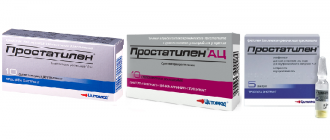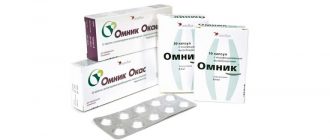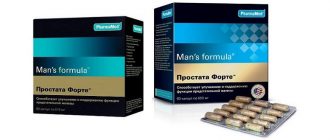Ceftriaxone for prostatitis is used to treat acute and chronic forms of the disease of bacterial origin. The medication is prescribed after laboratory tests have been completed and the pathogen has been identified. The specific dosage, method of administration and duration of treatment are prescribed by the attending doctor.
Release form and composition
Ceftriaxone for chronic prostatitis is used by preparing solutions for intravenous and intramuscular injections. The drug is available in the form of a white crystalline powder. The active substance is ceftriaxone.
The drug is sold by prescription only. The product is sold in glass bottles of 500 and 1000 mg, packed in a cardboard box of 1 or 10 pieces.
pharmachologic effect
Injections for prostatitis Ceftriaxone is a 3rd generation cephalosporin antibiotic. As a result of its impact on a large number of pathogenic microorganisms, it has a wide range of applications.
The following microorganisms are sensitive to cephalosporin drugs:
- gram-negative (enterobacteriaceae, Haemophilus influenzae, Klebsiella, Nisseria, Proteus, Citrobacter, Salmonella, Acinetobacter, Shigella);
- gram-positive (staphylococci, streptococci);
- anaerobic (bacteroides, clostridia).
Treatment of prostatitis with Ceftriaxone brings results due to the drug’s ability to destroy the cell membrane, thereby causing the death of bacteria. It is resistant to beta-lactamases produced by bacteria to counteract the antibiotic.
When taken, not only bacteria are destroyed. A number of symptoms of the disease are also relieved:
- swelling of the prostate decreases;
- pain is relieved;
- urination improves.
Indications
Ceftriaxone is used in the treatment of infectious diseases:
- genital organs (prostatitis, gonorrhea);
- urinary system;
- respiratory tract (pneumonia);
- skin and soft tissues;
- bones and joints;
- abdominal cavity (peritonitis, cholangitis, diarrhea, salmonellosis);
- ENT organs (tonsillitis, pharyngitis, otitis media, sinusitis, epiglottitis).
The product is also used to prevent the development of infection after surgery.
Contraindications
Contraindications for antibiotic use include:
- intolerance to drugs belonging to the class of β-lactam antibiotics (carbapenems, penicillins, cephalosporins);
- severe abnormalities in the functioning of the kidneys and liver.
It is prescribed with caution for nonspecific ulcerative colitis, liver and kidney disorders, and impaired bilirubin levels. In these cases, medical supervision and dose adjustment are necessary.
Due to improper use of the drug, side effects may occur:
- nausea, vomiting, stool disorders, dysbacteriosis, flatulence;
- rash, itching, urticaria;
- changes in blood tests, decreased urine production;
- dizziness, headache, nosebleeds.
Instructions for use
The treatment regimen for Ceftriaxone for prostatitis is selected individually. This depends on the degree of inflammation, the presence of concomitant diseases and the general condition of the patient.
Instructions for use of Ceftriaxone for prostatitis recommend a daily dose of 0.5 to 2 mg. For acute inflammation, the dosage can be increased to 4 mg.
To prepare the solution, the contents of the bottle must be diluted in a 1% solution of novocaine, lidocaine or 3.6 ml of water for injection.
Intramuscular administration of the drug into the gluteal muscle is recommended. When administered intravenously, dilution of the contents is allowed only with water for injection.
If the dosage of Ceftriaxone for prostatitis is 0.5 mg, then a single administration of the drug is acceptable. At a dosage of 1 mg, the administration is divided into 2 times - morning and evening.
The course of treatment with Ceftriaxone for prostatitis ranges from 5 days to 2 weeks. Treatment should not be interrupted when relief occurs.
Analogs
Analogues of the drug of the same medicinal group are:
- Lendatsin, Rocephin, Cefson - injections with the same active ingredient.
- Suprax is the active ingredient cefixime. Available in the form of capsules, granules for the preparation of a suspension taken orally, and soluble tablets.
- Pantsef is the active component of cefixime. It is produced in the form of tablets and granules for oral suspension.
- Spectracef is the active substance of cefditoren. Available in the form of film-coated tablets.



